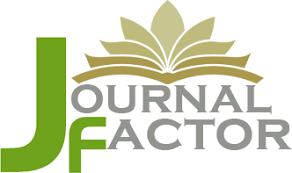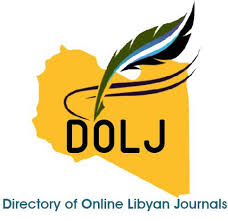Spectrum of Respiratory Distress in Neonates delivered in Tripoli Medical Center
DOI:
https://doi.org/10.54361/Abstract
Neonatal respiratory distress (NRD) is a main cause of neonatal morbidity and mortality . Early detection of its risk factors and early treatment of its etiologies are major challenges in the developing countries. However, few studies in the developing countries have provided data needed to tackle it. Aim : this study carried out to determine the admission rate, etiologies, related intervention and outcome of NRD in Tripoli Medical Center (TMC) as the main referral center in Tripoli-Libya. Method: Case series study was carried out from 1st January to 31th March 2010, and was based on reviewing the hospital files of all newborns admitted to the N.I.C.U. because of neonatal respiratory distress(NRD) irrespective of to the underlying cause. NRD was diagnosed based on the presence of one or more of the following signs: an abnormal respiratory rate, expiratory grunting, nasal flaring, chest wall recessions and thoraco- abdominal asynchrony with or without cyanosis These data included: clinical variables of newborns and their mothers in addition to results of their investigations . These variables were cross-checked to make sure that they were in line with the etiology of NRD in the hospital files. The related intervention ,and outcome were studied. Statistical data were coded and SPSS software was used for analysis. Result : In the 3 months studied and out of 2815 births ,and 448 newborns admitted in NICU, there were 337 newborns were admitted in NICU because of NRD giving admission rate of 11.9% from total births , and 75% from the total number of admission in NICU in the same period. The main etiologies of NRD were Transient Tachypnoea of Newborn( TTN) 33.2%, followed by Respiratory Distress Syndrome ( RDS) 26.4% , then Meconium Aspiration Syndrome (MAS) 13.1% and Perinatal Asphyxia 12.2% from the total No. of NRD. During admission period , 11.2% of NRD newborns were managed by mechanical ventilation; and only 0.6% were intervented by continuous positive airway pressure CPAP; where surfactant therapy was given to 3% . During this period the mortality rate of NRD was 11% , which was significantly related to RDS as it account 66.7% of total deaths (p 0.001).Taking in consideration that RDS account only 26.4% from total admission . Conclusion: NRD is a frequent emergency and causes high morbidity and significant mortality. Most of its risk factors and etiologies are preventable. Adequate follow-up during pregnancy and labor for timely intervention may improve the neonatal outcomes. Overall, our results emphasize the urgent need of improving obstetric care , equipping neonatal care units by noninvasive ventilatory support measures like CPAP machines ,and availability of surfactant.
Downloads
References
Guglani L, Lakshminrusimha S, Ryan RM. Transient tachypnea of the newborn Pediatr Rev. 2008 Nov;29(11):e59-65.
Kumar A1, Bhat BV. Epidemiology of respiratory distress of newborns. Indian J Pediatr. 1996 Jan-Feb;63(1):93-8.
Demissie,K,Marcella,SW,Breck anridge,MB,Rhonds,GG,Maternal Asthma Transient Tachypnea of the newborn,Pediatrics,1998,1020pt184-90.And.
Persson B ,Hanson U.Neonatal morbidities in gestational diabetes mellitus. Diabetes Care. 1998 Aug;21 Suppl 2:B79-84.
LevineEM, Ghai V, Bartonj , StromCM. Mode of delivery and risk of respiratory diseases in newborns.Obstet Gynecol. 2001; 97: 439 -442.
Respiratory distress syndrome of the newborns ped shell. American Lung Association .2006, Assessed May 2007at http,//www.lung S.Ƚ.org/site.pp,asp,c=duluk goo E&b=5695.
Ingemarsson I . Gender aspects of preterm birth. BJOG. 2003 Apr;110 Suppl 20:34-8.
Cleary GM , Wiswell TE. Meconium-stained amniotic fluid and the meconium aspiration syndrome. An update. Pediatr Clin North Am. 1998 Jun;45(3):511-29.
Schrag S, Gorwitz R, Fultz-Butts K, Schuchat A. Prevention of perinatal group B streptococcal disease. Revised guidelines from CDC. MMWR Recomm Rep. 2002 Aug 16;51(RR-11):1- 22.
Davis C,steven G, Value of routine radiographic examination of the newborns , based on a study of 202 consecutive babies ,Am J of obst. Gynae 193 20;43 .
Horbar JD1, Badger GJ, Carpenter JH, Fanaroff AA, Kilpatrick S, LaCorte M, Phibbs R, Soll RF; Members of the Vermont Oxford Network Trends in mortality and morbidity for very low birth weight infants, 1991-1999. Pediatrics. 2002 Jul;110(1 Pt 1):143-51.
Chambers CD1, Hernandez-Diaz S, Van Marter LJ, Werler MM, Louik C, Jones KL, Mitchell AA. Selective serotonin-reuptake inhibitors and risk of persistent pulmonary hypertension of the newborn. N Engl J Med. 2006 Feb 9;354(6):579-87.
Ersch J, Roth-Kleiner M, Baeckert P, Bucher HU. Increasing incidence of respiratory distress in neonates. Acta Paediatr. 2007;96(11):1577-81. PubMed | Google Scholar .
Kam KI, Ye D, Sawadogo A, Sanou I, Traore A, Koueta F et al. Les Détresses Respiratoires du nouveau-né dans L'unité de Néonatologie du centre hospitalier National de Ouagadougou, Burkina Faso. Burkina Médical. 1998;2(Suppl 1):44
Chakrouni M. Détresse respiratoire chez le nouveau-né à terme (à propos de 75 cas). Thèse de Doctorat en médecine: Université Sidi Mohammed Ben Abdellah; 2009.
Rubaltelli FF ,et al . Acute neonatal respiratory distress in Italy , Italian Group of Neonatal Pneumology, a one year prospective study , Acta Pediatr.1998 De ;Vol.87(12).pp:1261-8
Downloads
Published
Issue
Section
License
Copyright (c) 2018 Dr . Nouriyah A. Alwaqqaa, Dr. Suad A. Almadah , Dr. Faraj A. Ahamed (Author)

This work is licensed under a Creative Commons Attribution-NonCommercial-NoDerivatives 4.0 International License.
Open Access Policy
Libyan journal of medical Research (LJMR).is an open journal, therefore there are no fees required for downloading any publication from the journal website by authors, readers, and institution.
The journal applies the license of CC BY (a Creative Commons Attribution 4.0 International license). This license allows authors to keep ownership f the copyright of their papers. But this license permits any user to download , print out, extract, reuse, archive, and distribute the article, so long as appropriate credit is given to the authors and the source of the work.
The license ensures that the article will be available as widely as possible and that the article can be included in any scientific archive.
Editorial Policy
The publication of an article in a peer reviewed journal is an essential model for Libyan journal of medical Research (LJMR). It is necessary to agree upon standards of expected ethical behavior for all parties involved in the act of publishing: the author, the journal editorial, the peer reviewer and the publisher.
Any manuscript or substantial parts of it, submitted to the journal must not be under consideration by any other journal. In general, the manuscript should not have already been published in any journal or other citable form, although it may have been deposited on a preprint server. Authors are required to ensure that no material submitted as part of a manuscript infringes existing copyrights, or the rights of a third party.
Authorship Policy
The manuscript authorship should be limited to those who have made a significant contribution and intellectual input to the research submitted to the journal, including design, performance, interpretation of the reported study, and writing the manuscript. All those who have made significant contributions should be listed as co-authors.
Others who have participated in certain substantive aspects of the manuscript but without intellectual input should only be recognized in the acknowledgements section of the manuscript. Also, one of the authors should be selected as the corresponding author to communicate with the journal and approve the final version of the manuscript for publication in the LJMR.
Peer-review Policy
- All the manuscripts submitted to LJMR will be subjected to the double-blinded peer-review process;
- The manuscript will be reviewed by two suitable experts in the respective subject area.
- Reports of all the reviewers will be considered while deciding on acceptance/revision or rejection of a manuscript.
- Editor-In-Chief will make the final decision, based on the reviewer’s comments.
- Editor-In-Chief can ask one or more advisory board members for their suggestions upon a manuscript, before making the final decision.
- Associate editor and review editors provide administrative support to maintain the integrity of the peer-review process.
- In case, authors challenge the editor’s negative decision with suitable arguments, the manuscript can be sent to one more reviewer and the final decision will be made based upon his recommendations.












